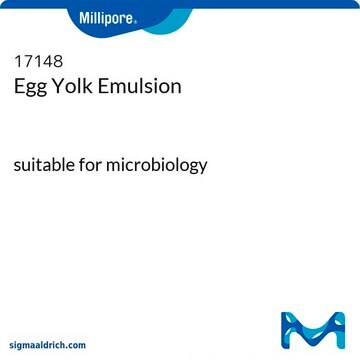If this product has an expiration or retest date, it will be shown on the Certificate of Analysis (COA, CofA). If there is no retest or expiration date listed on the product's COA, we do not have suitable stability data to determine a shelf life. For these products, the only date on the COA will be the release date; a retest, expiration, or use-by-date will not be displayed.
For all products, we recommend handling per defined conditions as printed in our product literature and website product descriptions. We recommend that products should be routinely inspected by customers to ensure they perform as expected.
For products without retest or expiration dates, our standard warranty of 1 year from the date of shipment is applicable.
For more information, please refer to the Product Dating Information document: https://www.sigmaaldrich.com/deepweb/assets/sigmaaldrich/marketing/global/documents/449/386/product-dating-information-mk.pdf
D6518
Diethylenetriaminepentaacetic acid
≥99% (titration)
Synonym(s):
(Carboxymethylimino)bis(ethylenenitrilo)tetraacetic acid, N,N-Bis(2-[bis(carboxymethyl)amino]ethyl)glycine, DETAPAC, DTPA, Penta(carboxymethyl)diethylenetriamine, Pentetic acid
About This Item
Recommended Products
biological source
synthetic (organic)
Quality Level
Assay
≥99% (titration)
form
powder
mp
219-220 °C (lit.)
solubility
1 M HCl: 50 mg/mL, clear, colorless
storage temp.
room temp
SMILES string
OC(=O)CN(CCN(CC(O)=O)CC(O)=O)CCN(CC(O)=O)CC(O)=O
InChI
1S/C14H23N3O10/c18-10(19)5-15(1-3-16(6-11(20)21)7-12(22)23)2-4-17(8-13(24)25)9-14(26)27/h1-9H2,(H,18,19)(H,20,21)(H,22,23)(H,24,25)(H,26,27)
InChI key
QPCDCPDFJACHGM-UHFFFAOYSA-N
Looking for similar products? Visit Product Comparison Guide
Related Categories
General description
Application
- for cofilin activity assay[3]
- to determine the specificity of superoxide in the transverse aortic constriction (TAC) hearts[4]
- for Europium bead-based detection assays[5]
- to detect reduced (S- active) or irreversibly oxidized (SO3H inactive) tyrosine-protein phosphatase non-receptor type 6 (SHP-1) in thymocytes[6]
Preparation Note
Signal Word
Danger
Hazard Statements
Precautionary Statements
Hazard Classifications
Acute Tox. 4 Inhalation - Eye Irrit. 2 - Repr. 1B - STOT RE 2 Inhalation
Target Organs
Respiratory Tract
Storage Class Code
6.1C - Combustible acute toxic Cat.3 / toxic compounds or compounds which causing chronic effects
WGK
WGK 2
Flash Point(F)
392.0 °F - closed cup
Flash Point(C)
200 °C - closed cup
Choose from one of the most recent versions:
Certificates of Analysis (COA)
Don't see the Right Version?
If you require a particular version, you can look up a specific certificate by the Lot or Batch number.
Already Own This Product?
Find documentation for the products that you have recently purchased in the Document Library.
Customers Also Viewed
-
How can I determine the shelf life / expiration / retest date of this product?
1 answer-
Helpful?
-
-
How is shipping temperature determined? And how is it related to the product storage temperature?
1 answer-
Products may be shipped at a different temperature than the recommended long-term storage temperature. If the product quality is sensitive to short-term exposure to conditions other than the recommended long-term storage, it will be shipped on wet or dry-ice. If the product quality is NOT affected by short-term exposure to conditions other than the recommended long-term storage, it will be shipped at ambient temperature. As shipping routes are configured for minimum transit times, shipping at ambient temperature helps control shipping costs for our customers. For more information, please refer to the Storage and Transport Conditions document: https://www.sigmaaldrich.com/deepweb/assets/sigmaaldrich/marketing/global/documents/316/622/storage-transport-conditions-mk.pdf
Helpful?
-
-
How can I get Product D6518, Diethylenetriaminepentaacetic acid, to dissolve?
1 answer-
As is the case with other chelating agents such as EDTA and EGTA, the solubility of DTPA is a function of pH. Therefore, this compound can be solubilized with either the addition of acid such as a hydrochloric acid solution or (more likely) base such as a sodium hydroxide solution .
Helpful?
-
-
What cations can be chelated with Product D6518, Diethylenetriaminepentaacetic acid (DTPA)?
1 answer-
DTPA forms stable complexes with most divalent and trivalent cations. Some examples are Fe3+, Cu2+, Ni2+, Pb2+, Zn2+, Fe2+, Mn2+, Ca2+, Mg2+, and Ba2+.
Helpful?
-
-
What are the pKa values for Product D6518, Diethylenetriaminepentaacetic acid?
1 answer-
The pKa values for the carboxyl groups as reported in the reference book "Data for Biochemical Research, 3rd ed., page 402, Oxford University Press, New York (1986)." are 1.8, 2.6, 4.4, 8.8, and 10.4.
Helpful?
-
-
What is the Department of Transportation shipping information for this product?
1 answer-
Transportation information can be found in Section 14 of the product's (M)SDS.To access the shipping information for this material, use the link on the product detail page for the product.
Helpful?
-
Active Filters
Our team of scientists has experience in all areas of research including Life Science, Material Science, Chemical Synthesis, Chromatography, Analytical and many others.
Contact Technical Service












